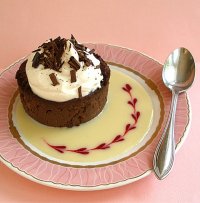 Some recipes, such as in our Dark Chocolate Bread Pudding Recipe Tutorial, call for using dry or stale bread. What does that mean? Most of us think we can use what we have on hand – day old stale bread – or take fresh bread and dry it in the oven or toast it. What's the best way?
Some recipes, such as in our Dark Chocolate Bread Pudding Recipe Tutorial, call for using dry or stale bread. What does that mean? Most of us think we can use what we have on hand – day old stale bread – or take fresh bread and dry it in the oven or toast it. What's the best way?
HOW TO TIPS:
SARAH SAYS: I recommend drying (staling) cubed bread on a foil-lined baking sheet in a 225-degree F oven for about 35 minutes. Make sure you toss the bread a few times during the process so it browns evenly. The baking process causes the moisture to evaporate from the bread, leaving its structure more intact when moistened and rehydrated for use in the recipe.
Staling causes a process in the starch molecules in bread to recrystallize during retrogradation; here the bread becomes hard and crumbly, but not necessarily dry. When moistened in the recipe, the bread becomes mushy and falls apart.



